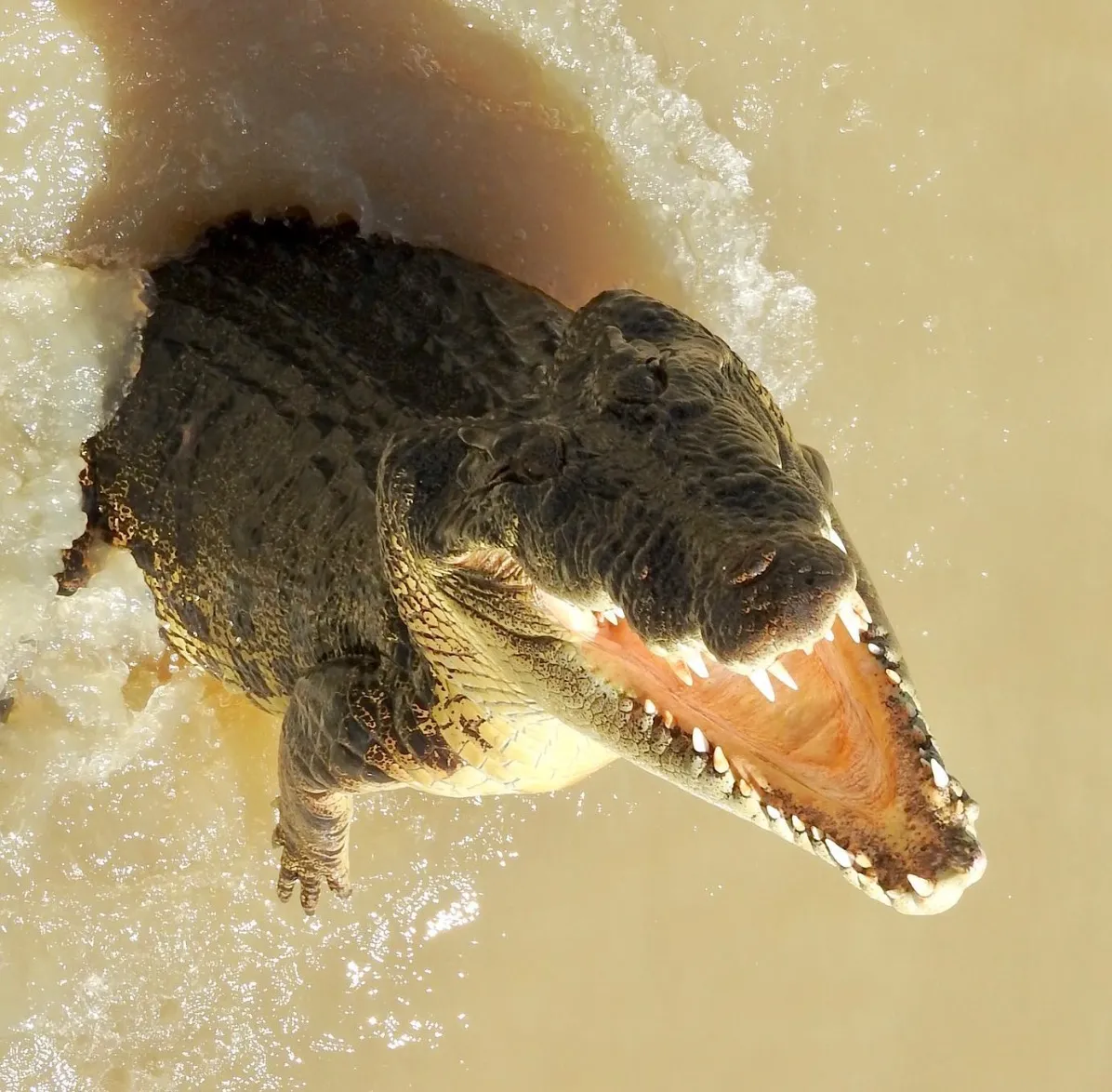Jumping crocodiles are the most amazing apex predators in the wild. These monsters, the Crocodylus porosus, have a unique and deadly hunting style of stealth, power and precision. They are famous for jumping out of the water, and this is a testament to their physical adaptations and survival strategy in their harsh environments. Whether in the murky waters of a mangrove swamp or the clearer estuarine waters, seeing a saltwater crocodile in action is a thrill. This article will tell you how they hunt, what influences their behaviour and where to see them in the wild. Book the Jumping Crocodile Tour, and you’ll see them jump out of the water right in front of you!
Jumping Crocodiles
What are Jumping Crocodiles?
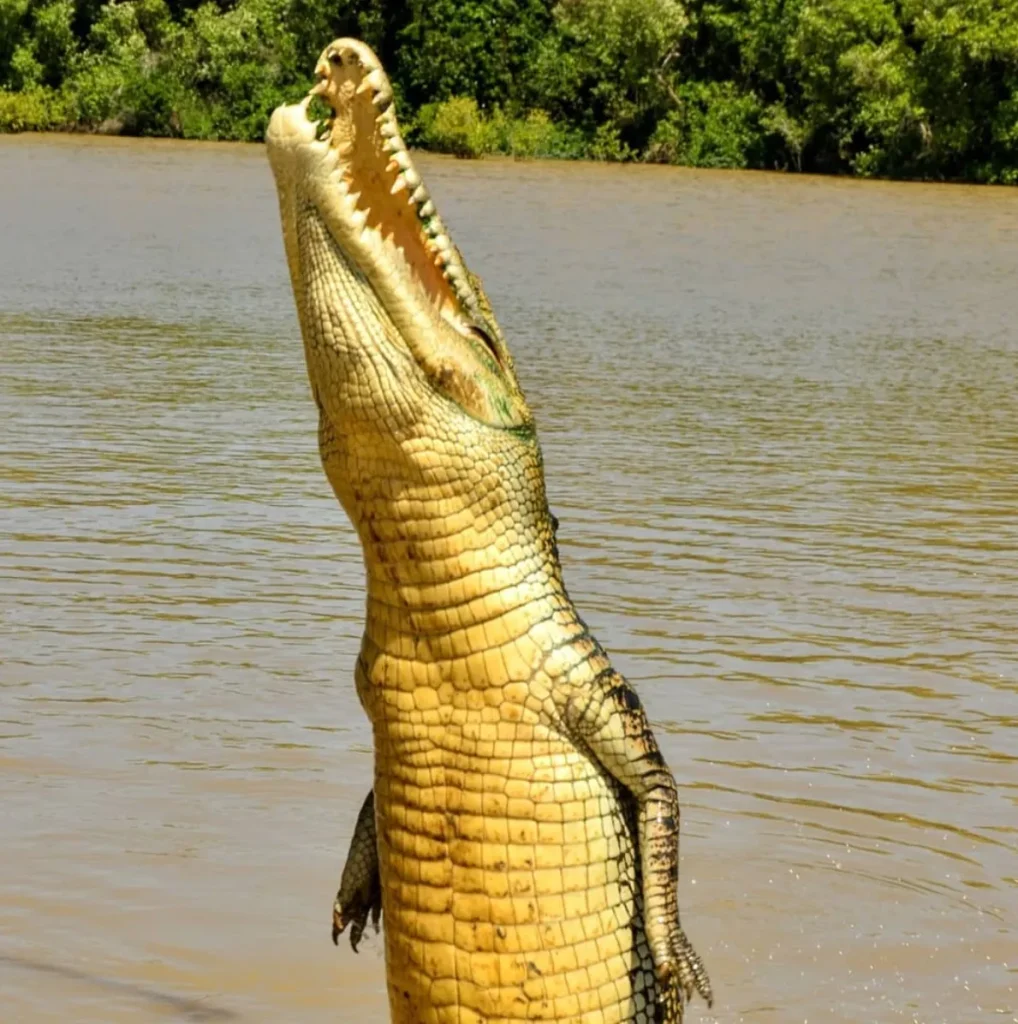
Jumping crocodiles are saltwater crocodiles, also known as estuarine crocodiles or Crocodylus porosus. This is the largest crocodile and the largest of all living reptiles, with some reaching over 7 meters in length. Unlike other crocodilian species such as Crocodylus niloticus (Nile crocodile), Crocodylus novae guineae (New Guinea crocodile), and Crocodylus anthropophagus, the saltwater crocodile has a unique behaviour of jumping vertically out of the water to catch prey. This is useful in areas where food is scarce and competition is fierce. Unlike Gavialis gangeticus (gharials) and Alligator sinensis (Chinese alligators), which have more specialized diets, C. porosus has a wide range of prey, from birds to mammals to sharks, making them the most versatile and deadly predator in their environment.
Physical Adaptations for Jumping
The physical attributes of saltwater crocodiles are perfect for jumping. Their powerful tails, which are used for swimming and leaping, are the propellant that lifts their bodies out of the water. The muscle strength in their tails is unmatched among crocodilians, providing the force for their big jumps. Their streamlined bodies, conical teeth and good eyesight are all adaptations for efficient hunting. The palatal valve, a flap in their throat, allows them to keep their mouth open underwater without swallowing water so they can catch and hold onto prey in shallow water or while jumping.
Jumping Crocodiles Hunting Process
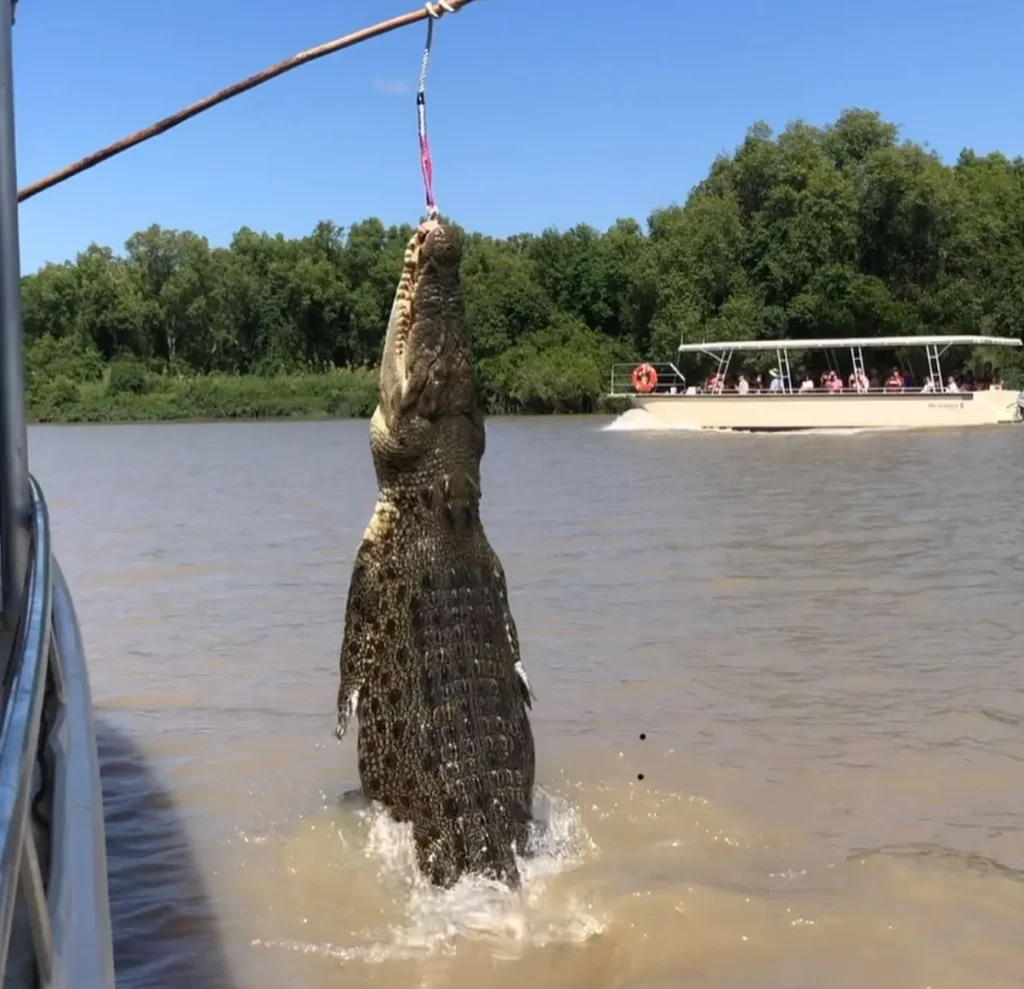
Stalking
The jumping crocodiles hunting process starts with stalking. In their natural habitat such as mangrove swamps and river systems, the crocodiles lie in wait just below the surface of the water, blending in with the surroundings. Being undetected is key to their hunting success. They target birds and mammals that come to drink or rest on low hanging branches. Using their acute senses to detect even the slightest movement, they sneak up without making a ripple, so they are in striking distance before they make their move.
The Jump
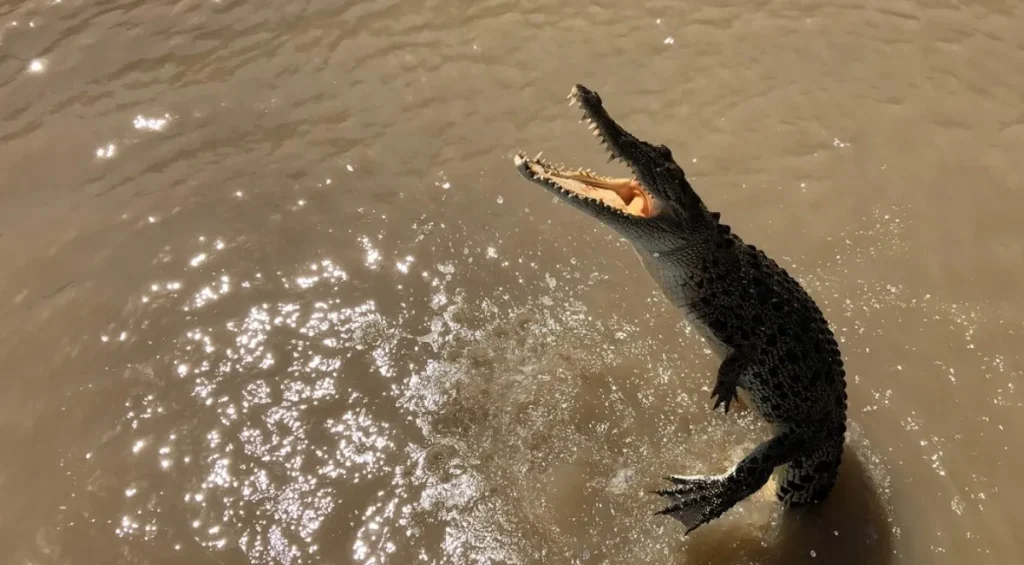
Once in position, the crocodile jumps by contracting its tail muscles quickly. This propels it out of the water, often high enough to grab prey that is several feet above. The element of surprise, combined with the crocodile’s explosive power, leaves little chance for the prey to get away. This jumping is unique to true crocodiles and is a characteristic of C. porosus, not Caiman crocodilus (spectacled caimans) or Alligatoridae, such as nuisance alligators, which don’t display this aerial hunting behaviour.
Post Capture Behaviour
After catching its prey, the crocodile submerges, using the water to control and eat its catch. It may do a “death roll” a spinning motion that helps to dismember larger prey into smaller pieces. This behaviour not only subdues the prey but also protects the crocodile from other crocodiles or aggressive species that may be competing for food. Non fatal attacks on humans or animals by smaller crocodiles are often defensive behaviour rather than hunting.
Jumping Behaviour Factors
Environmental Conditions
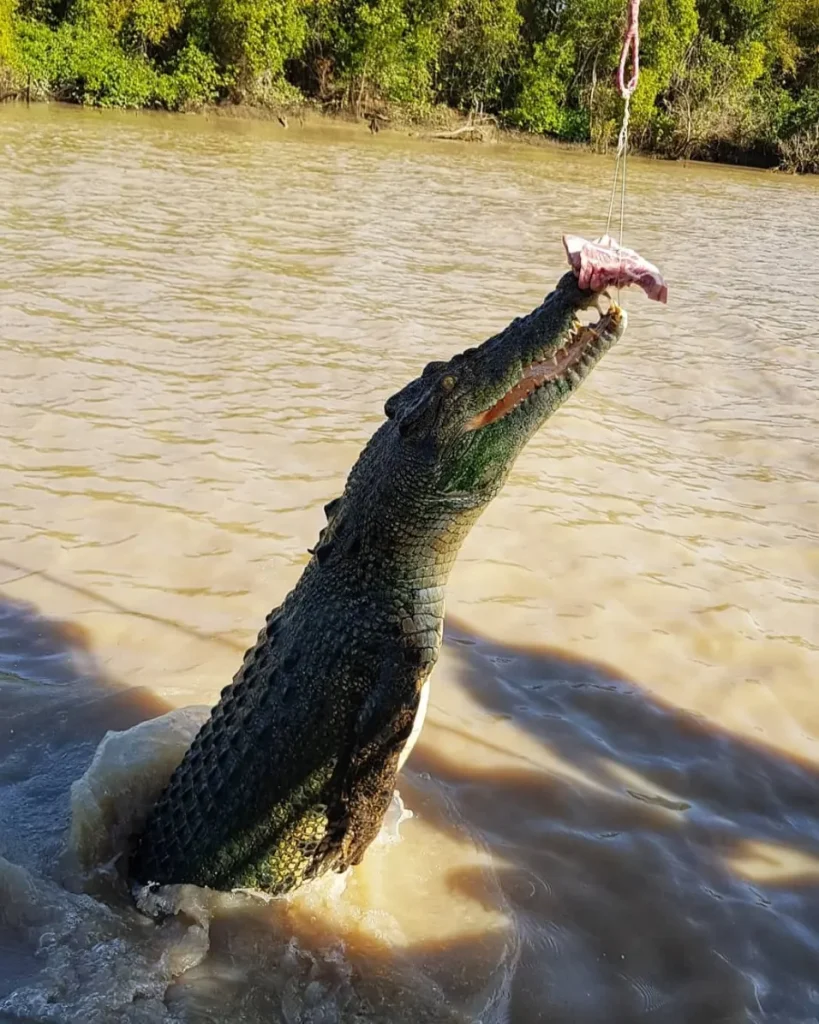
Environmental factors such as water levels, temperature and habitat type affect the frequency and success of jumping. For example, in areas where the water levels are low, the crocodiles are more concentrated in certain areas and more competition for food, so they jump more often. Murky water can be an advantage as it reduces visibility and increases the element of surprise. Shallow water in some areas allows the crocodiles to use their jumping technique more effectively.
Prey
Prey availability is a key factor in jumping behaviour. Areas with high wildlife such as Kakadu National Park have plenty of opportunities for the crocodiles to hunt from both water and land. In areas with limited prey the crocodiles will extend their prey range to include more challenging or unusual prey, such as birds and small mammals that other crocodilian species wouldn’t.
Where to see Jumping Crocodiles
Kakadu National Park
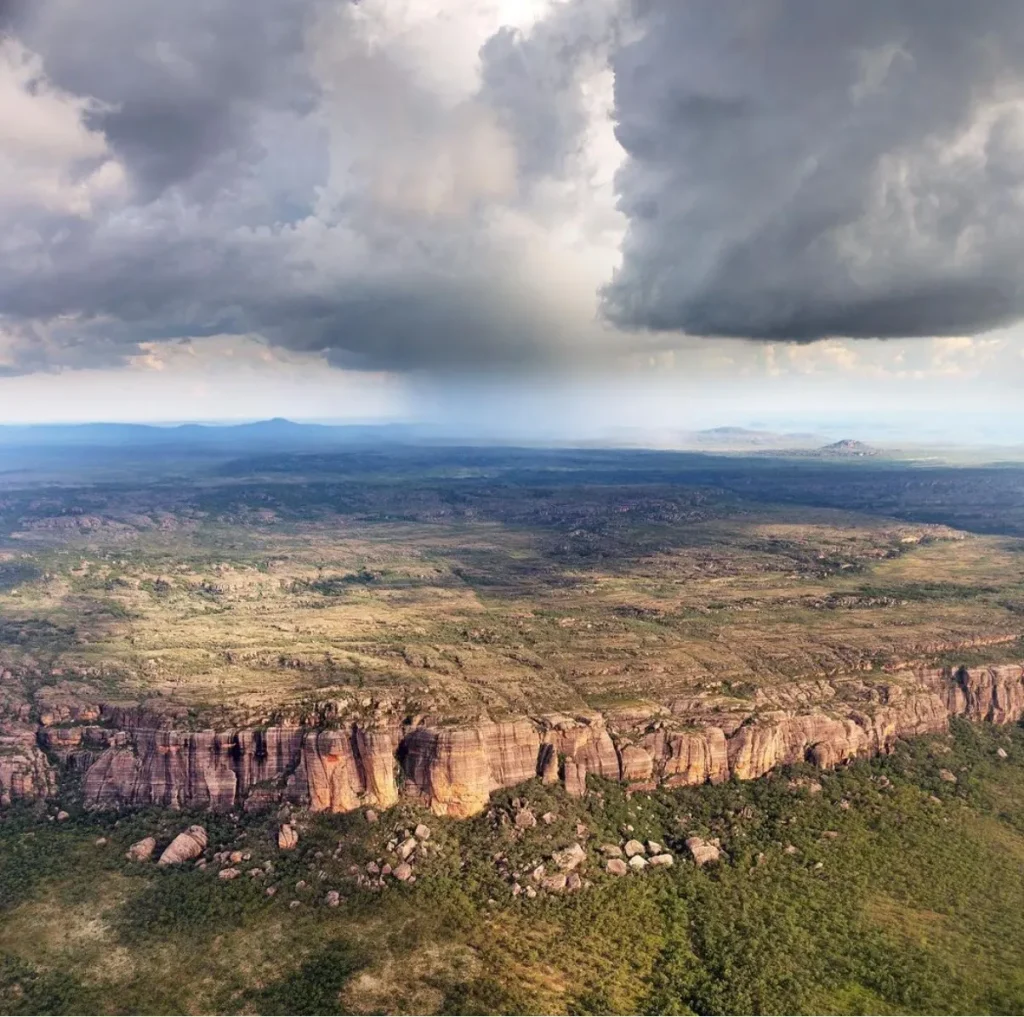
Kakadu National Park is the ultimate spot to see saltwater crocodiles in the wild. The park’s waterways, mangrove swamps and diverse ecosystems have healthy populations of Crocodylus porosus. Guided tours on the Adelaide River give you a chance to see crocs jumping for food, a behaviour encouraged by our experienced guides using safe and sustainable methods.
Darwin River Cruises
Darwin River Cruises also offer another chance to see jumping crocodiles up close. These tours are led by experts who will tell you all about the natural history and conservation status of crocodiles. We are all about responsible tourism so we don’t disrupt the crocodiles natural behaviour. This education and conservation focus helps support the protection of these amazing reptiles and their habitats.
Conservation and Responsible Tourism
Saltwater crocodiles have faced many challenges due to habitat loss, hunting and human conflict. Organisations like the Crocodile Specialist Group and the Fish and Wildlife Conservation Commission monitor and manage crocodilian populations. Conservation efforts aim to protect critical habitats and reduce conflicts between humans and crocodiles, especially in areas where crocodile attacks are more common. Responsible tourism practices like keeping a safe distance and not feeding them are key to the balance between conservation and human activity.
Table: Key Factors Influencing Jumping Behavior in Saltwater Crocodiles
| Factor | Description | Impact on Behavior |
|---|---|---|
| Water Levels | Seasonal changes can concentrate crocodiles in specific areas. | Increased competition leads to more frequent jumping behaviour. |
| Temperature | Crocodiles rely on external heat to regulate their body temperature. | Extreme temperatures can reduce activity and alter hunting habits. |
| Prey Availability | Presence of accessible prey such as birds and mammals. | High prey availability triggers more frequent hunting attempts. |
| Human Activity | Tourist presence and feeding can influence behaviour. | Excessive activity may lead to changes in natural hunting patterns. |
| Habitat Type | Mangrove swamps and shallow waters provide ideal jumping conditions. | Murky waters enhance stealth, increasing success rates. |
Here is the table of environmental and human factors that affect jumping crocodiles. Knowing this will help us appreciate them and protect their habitat.
Conclusion
Jumping crocodiles are a reminder that nature’s predators are cool. Their clever hunting techniques, whether it’s Crocodylus porosus, Crocodylus niloticus or other crocodilians, ensure their survival and the balance of their ecosystem. For travellers and wildlife enthusiasts, seeing this in person is a fun and educational experience. Go to famous destinations and practice responsible tourism. You can see jumping crocodiles and help conserve them.
FAQ
Why do they jump out of the water?
They jump out of the water to catch prey that’s out of their reach. To catch birds and small mammals above the water.
Do all crocodilians jump?
No, not all crocodilians jump. While Crocodylus porosus is famous for this hunting technique, Gavialis gangeticus and Caiman crocodilus have different hunting methods that don’t involve jumping.
What does the Crocodile Specialist Group do for crocodile conservation?
The Crocodile Specialist Group is a global network of experts who work for the conservation and management of crocodilian species. They protect habitats, reduce human-crocodile conflict and promote sustainable use and responsible tourism.
Can human activities affect crocodile behavior?
Yes, human activities such as feeding or getting too close to crocodiles can change their natural behavior. This can lead to dangerous situations and disturb the balance of their ecosystem.
Where to see jumping crocodiles in Australia?
Kakadu National Park and Darwin River Cruises are the best places to see jumping crocodiles. They offer guided tours where you can see this in person and learn about crocodile conservation.
